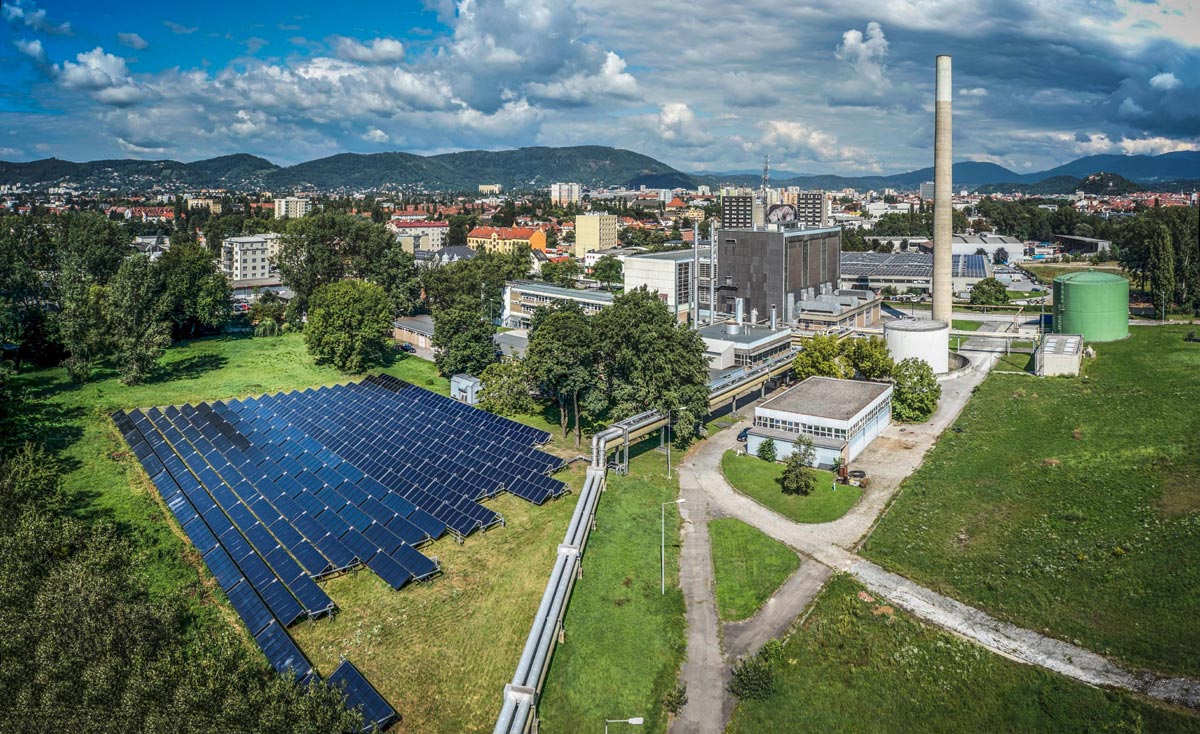Today district heating covers 39 % of the demand for heat in Graz (around 1 000 GWh in 2013). It is planned to expand the district heating grid considerably. The heat for the grid is largely supplied from cogeneration facilities burning fossil fuel. The deadline set for closing down the conventional power stations which currently deliver about 70 % of the heat for Graz‘ district heating requirements is 2020. The city of Graz is thus facing the challenge of redesigning the entire urban district heating system. In the future heat from the sun is to make a major contribution to the city‘s district heating needs.
A consortium headed by S.O.L.I.D. carried out a feasibility study to define the technological and economic prerequisites for making use of solar heat in the Graz district heating grid on a large scale. The target, based on experiences in Denmark, was a 20 % solar contribution to the district heating grid.
A primary focus of the survey was on evaluating suitable locations for collector arrays and storage facilities, using simulation techniques to fine-tune engineering and analysing economic aspects in detail. The results indicate that the approach planned has a great deal of potential. From the analysis it is clear that a solar system with around 150 000 to 650 000 m2 of collector area, capable of covering 9 to 26 % of Graz‘ current district heating demand, is economically competitive. These findings provided the basis for working out a business case which was submitted to the decisionmakers early in 2016. If this large-scale, pioneering showcase project were implemented, Graz and all the stakeholders involved would become international pioneers for solar heating in towns and cities.
> Ultra-efficient large-scale collectors: 450.000 m2
> Seasonal heat storage facility: 1.800.000 m3
> Absorption heat pumps: 6 x 16 MW
> Solar yield: 245 GWh/a
> Solar heat rating: 250 MW
> Solar contribution: ca. 23 %
> Total investment: 189 million EUR
>Retrievable heat at 85°C at any time
